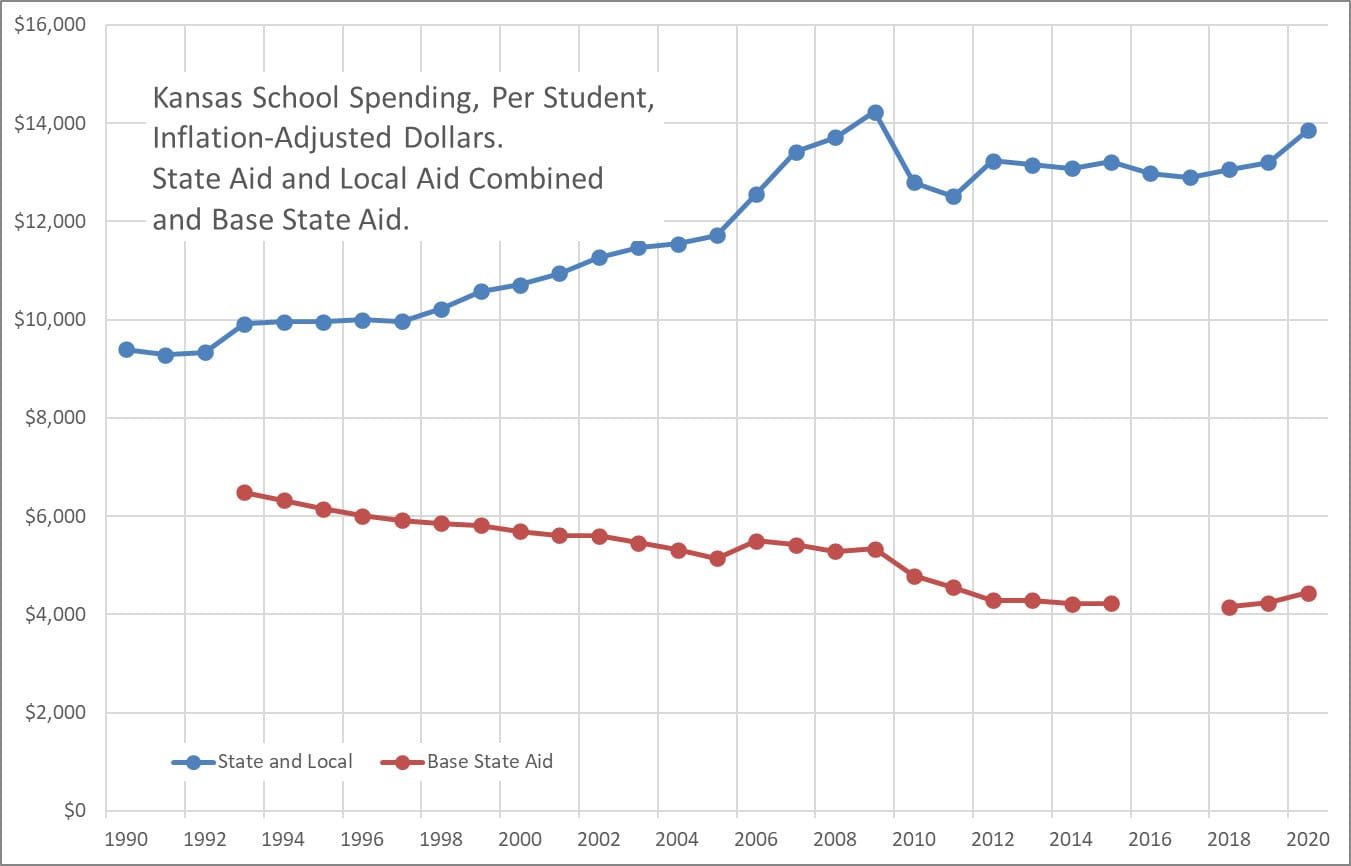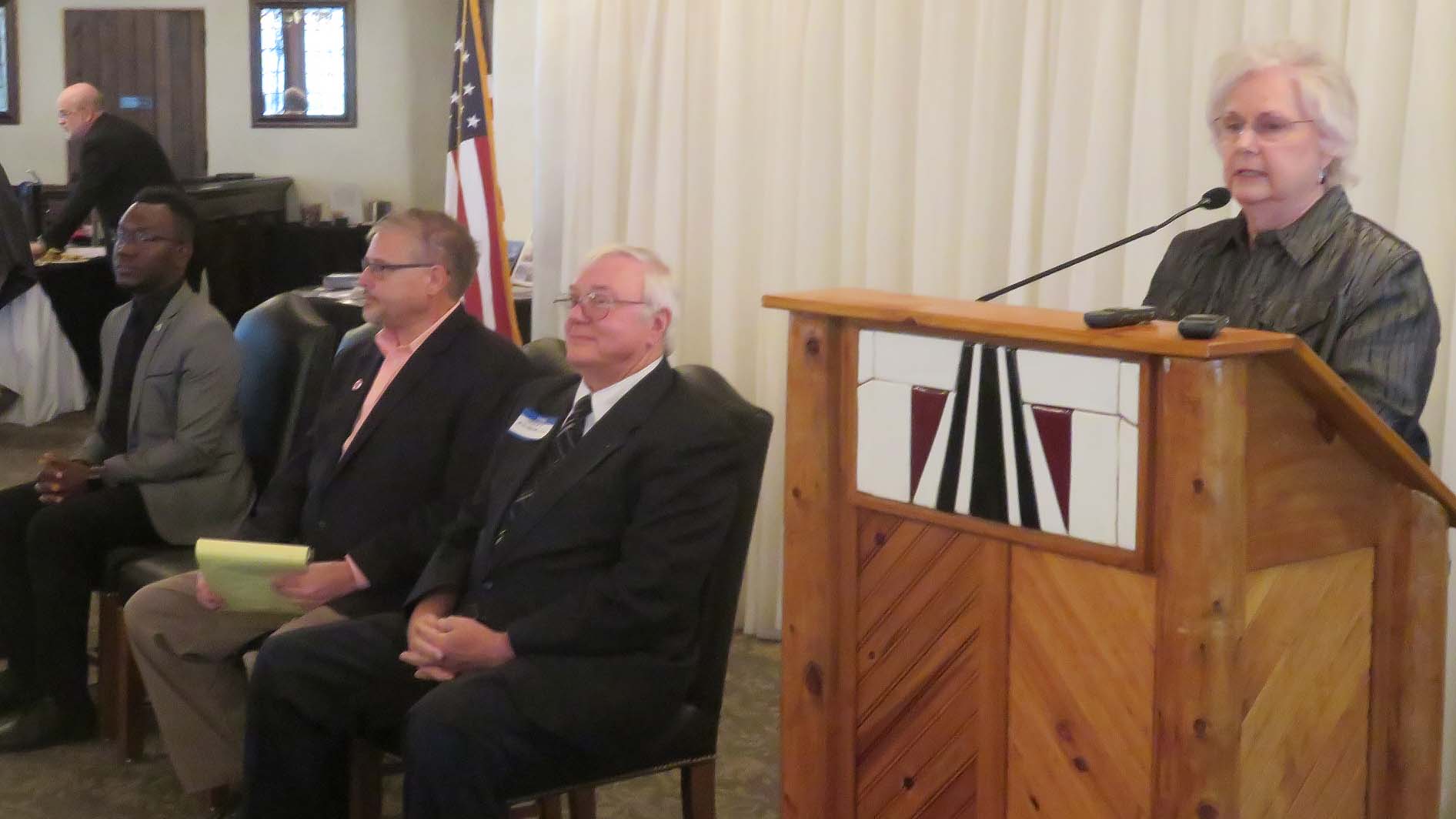Tag: Wichita and Kansas schools
-

Kansas school spending
Kansas school district spending, updated through 2020 and adjusted for inflation.
-

Kansas school spending, through 2020
Charts of Kansas school spending presented in different forms.
-

Wichita property tax on commercial property: High
An ongoing study reports that property taxes on commercial and industrial property in Wichita are high. In particular, taxes on commercial property in Wichita are among the highest in the nation.
-

Kansas school employment
Kansas school employment rose for the current school year.
-

Performance levels in Wichita schools
There is some good news in the performance level reports for Wichita public schools.
-

Kansas school salaries
Kansas school salaries, visualized.
-

Wichita public schools, by the charts
Data from the annual report for the 2018-2019 school year for USD 259, the Wichita, Kansas public school district.
-

Kansas sees large drop in test scores
Using demographically-adjusted scores, Kansas falls in state rankings of National Assessment of Educational Progress (NAEP).
-

From Pachyderm: Wichita school board candidates
From the Wichita Pachyderm Club this week: Candidates for the board of USD 259, the Wichita public school district. This was recorded October 4, 2019.
-

In NAEP mapping study, Kansas shines
In a new edition of a study that assesses the stringency of state school assessments, Kansas performs well.
-

Wichita public schools, by the charts
Data from the annual report for USD 259, the Wichita, Kansas, public school district.
-

Kansas tax credit scholarship program
An op-ed in the Wichita Eagle regarding school choice prompts uninformed and misinformed comments.